Share
576 shares
Endurance and stamina are incredibly important for runners.
The ability to run for longer without getting so tired is an important skill to master.
It pays off to be patient and consistent when it comes to training for longer distances.
Whether you’re building up to a 5k, 10k, half marathon or marathon, the key is to gradually build up the time and distance in which you can comfortably run without getting tired or out of breath.
Likewise, if you’re new to running, then you may be thinking how you can run for longer without getting so tired.
It may seem an unachievable goal right now, but with the right mindset, training and practice, you will get there.
Whatever stage you’re at, this guide will offer actionable tips to help you run for longer without getting so tired.
In this guide, we’ll explore:
Ready?
Let’s go!
You may be asking yourself: “Why do I get tired so easily on runs?”
It’s common to experience short periods of tiredness and fatigue when running and in between runs, especially after a long or demanding run.
You may struggle to breath when running, or you may have that heavy legs feeling on a run.
Here are some common causes of tiredness and fatigue:
#1 Lack of sleep
A healthy sleep routine will go a long way to help you feel more refreshed not only on a run, but in your daily life.
According to a 2017 study, chronic sleep deprivation has been shown to increase the risk of a host of physical and mental illnesses.
The study added that sleep deprivation costs the healthcare system billions of dollars annually.
Aim to get between 6 to 8 hours of sleep per night and practice good sleep hygiene.
#2 Lack of adequate recovery time in between runs
Overtraining is a common problem in the running community.
Overtraining boils down to ineffective recovery in between runs on a repeated basis.
So if you’re currently going through an unexplained dip in performance, or you regularly feel tired and fatigued on your runs, you may be experiencing Overtraining Syndrome (OS).
The important thing is to recognise the signs and symptoms of Overtraining Syndrome before it gets any worse.
#3 Insufficient fuel intake
Food and nutrition play an integral role in all forms of exercise, not just running.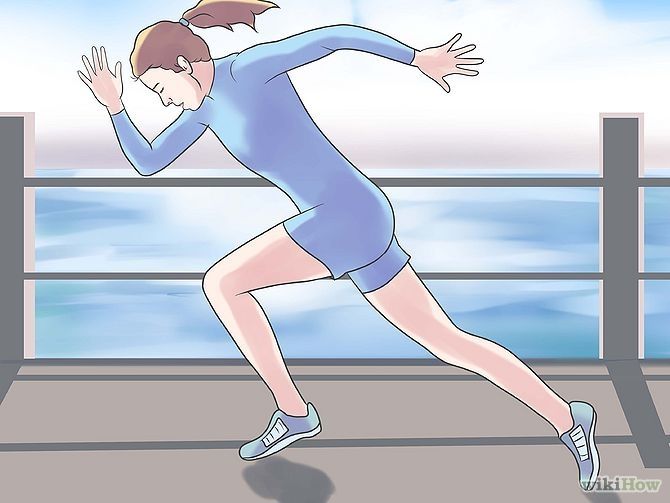
You can think of your body as an engine – simply put if you don’t give it the right type of fuel and the right amounts of fuel, it won’t be able to perform at a high level.
Aim to get the right amounts of carbohydrates, protein, healthy fats and vitamins and minerals in your diet.
#4 Poor nutrition
If you’re used to eating processed foods and consuming sugary drinks and you regularly feel fatigued on your runs, then it’s a sign you need to review your eating habits.
Poor nutrition is a common cause of tiredness and fatigue.
Aim to eat a healthy, balanced diet that supports the needs of your body.
#5 Stress and anxiety
Whilst exercise like running has been shown to improve your mood and ease symptoms of stress and anxiety, poor mental health can have a negative affect on athletic performance.
People with anxiety tend to be more sedentary and do less intense forms of physical exercise, if any.
#6 Hormone imbalance
According to a study on the role hormones in exercise physiology, excessive or inadequate levels of several hormones place constraints on exercise performance.
Various studies have shown the importance of hormones and the endocrine system when it comes to exercise capability.
If you have dysfunctions in your thyroid, adrenal and pituitary glands, for example, this may induce specific disorders of the neuromuscular system which could lead to tiredness and fatigue.
If in doubt, speak to your healthcare professional.
#7 Iron deficiency
If you regularly experience periods of tiredness and fatigue, then seek help from a healthcare professional as it could be down to an underlying cause such as an iron deficiency.
Many tests can be performed nowadays to identify underlying causes of tiredness and fatigue, with blood tests being one of them.
Related: 6 tips for successfully running with a chronic illness
#1 Build your endurance and stamina
In order to run for longer without getting so tired, you need to build up your running endurance and stamina.
The golden rule to increase running stamina and endurance is consistency.
This means making running a regular habit and training consistently and progressing at regular intervals.
By training consistently, you increase your aerobic capacity (also known as your VO2 max or running economy) and strengthen your muscles.
In terms of progression, your mileage should increase by 5-10% each week to avoid training overload.
If you do all of these things, you can expect to see a improvement within 2 to 3 months.
Related: How to increase running stamina and endurance
#2 Increase your speed
Running speed is something that many runners look to improve once they have achieved a good base level of fitness.
Speed training like interval training and tempo running are a great way to build your speed, endurance and stamina.
According to a 2020 study on training and physical performance in recreational runners, training sessions that include continuous exercise performed at both low and high intensity levels are beneficial for running performance.
The study added that sessions of variable intensity represent the training methods most often used to improve performance in endurance competitive events.
When it comes to running faster, remember that speed should always follow endurance.
In other words, work to increase your running stamina and endurance first before you focus on improving your speed.
Here are two example speed training sessions:
Interval training
Interval training is basically alternating periods of high-intensity effort (fast running or sprinting) with periods of low-intensity effort (slow running or walking).
A typical interval training session lasts anywhere between 5-30 minutes.
Here is a sample interval training workout:

Tempo running
A tempo run, also known as a ‘threshold’ run, is a pace about 25 to 30 seconds slower than your 5k race pace.
It is designed to be a challenging pace, but not so much that you’re full out sprinting.
Here is a sample tempo running workout:
Related: 6 interval training benefits for runners
Now you know how to run for longer without getting so tired, here is a sample endurance and stamina training plan.
Begin by adding extra runs into your training plan each week.
The key here is to include easy and long runs first, then graduate onto more speed focused sessions like interval training.
Strength training can also be added to help improve running performance.
Weeks 1 to 4
Weeks 5 to 10
Most half marathon and marathon training plans will build up distance slowly over a matter of weeks, but you should increase your running time by 5-10 minutes or add 0.5 to 1 mile each time.
Don’t progress more than 5-10% each week otherwise you risk training overload.
You should also run at a conversational pace, in other words, don’t overdo it! It should be easy to hold a conversation without getting out of breath.
Many runners try to complete a long run too fast and end up struggling at the end or, even worse, end up injuring themselves because it was too much too soon.
Remember that speed should always follow endurance.
Therefore you need to build a solid base of endurance before you can start tackling more challenging training sessions like intervals and tempo running.
#1 Remember to warm up
A warm up is integral to any race – whether you’re running a 5k, 10k or half marathon.
It tells your brain that you’re about to do some serious exercise and gets your muscles ready so they can perform at peak efficiency.
A warm up has three key objectives:
A good warm up should leave you energised but not tired. If you push it too hard you may risk injury or poor performance during your race.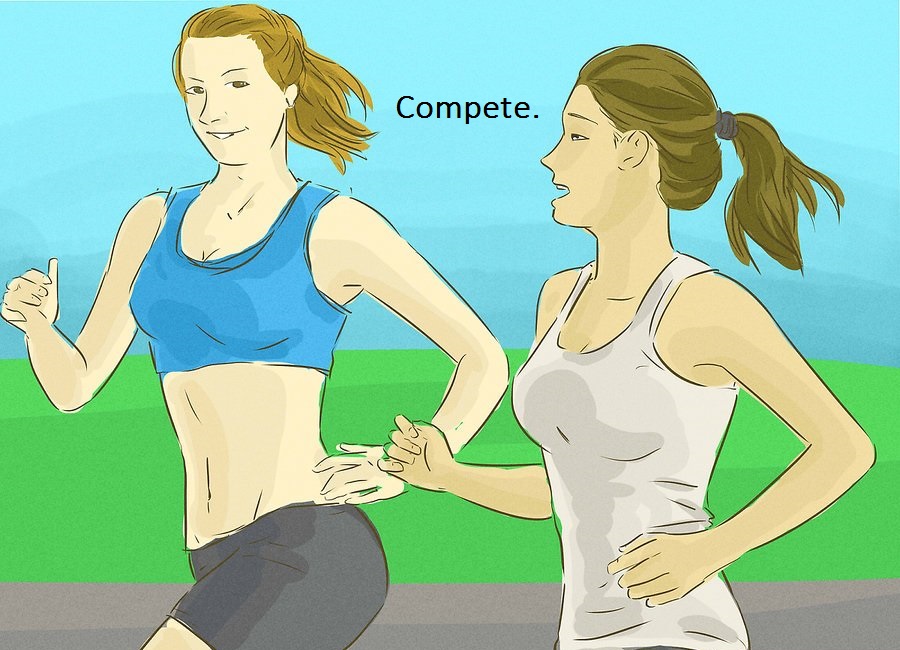
There are many versions of warm ups out there depending on race duration, your fitness levels and running experience.
At its core a proper warm up consists of three main parts:
Here are a few example dynamic stretches and running drills that you can perform before your run:
Dynamic stretches
Running drills
Related: How to warm up before a run
#2 Pace yourself
One of the challenges of longer runs is learning how to pace your run so you don’t tire yourself out too quickly.
You don’t want to run too fast, yet you don’t want to run too slow.
Pacing is all about experimentation. The more you run, the better you become judging your pace and whether you need to go faster or slower.
You will undoubtedly feel fresher at the start of a run so the temptation is to go fast from the get go, but you should try and avoid this.
Dependent upon the distance, your pace and effort will change. The first mile may feel like the slowest as your body warms up and gets used to the movement.
This is why a warm-up is so important for your run – you will soon get into your stride.
To really understand what pace you should be running at, use a running pace calculator to work out how fast (or slow) you should be running.
A pace calculator works by giving you your pace per mile for a given distance. Simply enter any two variables – pace, time or distance – and the pace calculator will determine your pace.
The Active.com pace calculator as it allows you to work out your pace using the variables above for a range of different distances.
Related: How to pace your run
#3 Strength train
Strength training is not the most obvious choice for runners when trying to run for longer without getting so tired.
The fact is strength training makes you a stronger, faster and more efficient runner, as well as helping to prevent common running injuries.
The key to strength training for runners is to keep it simple.
Focus on strength workouts that target all the main muscle groups that you use when running (also called ‘compound movements’).
Here is a sample strength workout that you either do on a designated strength training day or after an easy run.
Complete 3 sets of 12-15 reps of each exercise, with 1 minute rest in between each set:
Related: 7 of the best glute strengthening exercises for runners
#4 Listen to your body
Endurance running requires a lot of physical and mental stamina.
When you’re on a long run and you’re really struggling, it’s important to listen to your body to really hone in on what it is telling you.
Ask yourself: why are you struggling on your run today?
When training for longer distances it can be all too easy to get carried away and run all the time.
Whilst it’s great to be excited about running, overtraining can be detrimental to your performance in the long term.
A good way to combat overtraining is to practice mindful running.
Mindful running is essentially about being more mentally connected with your movement and not being distracted when you run.
Try turning off your music and really listen to how it feels to run. If your legs start to tremble, for example, you know it’s time to slow down.
Likewise, if you start to feel a niggling injury, you know it’s time to put the breaks on a bit whilst you let your body recover.
Mindful running works best when you’re out on a solo run. Try it at least once a week so you can really have time to practice your breathing and listening to your body.
Related: 6 mental tips for long runs
#5 Fuel your body properly
As your mileage increases, you need to fuel your body appropriately. Your muscles need additional fuel to power you through a longer run.
Your performance on a long run suffers without proper fuel. Not fueling your body properly can put you at greater risk of injury and may affect your immune system.
If you run early in the morning, it is important to eat adequately both on the morning of and leading up to the run.
You don’t have to eat a large meal, but the goal is get a burst of energy to get you started.
Some examples of food to eat before your run include:
The key is to get a good mixture of carbohydrates, glucose (a form of sugar), lean protein and fats.
The amount you eat will depend on how much time you have before you start your run.
If you have 30 minutes or less, the focus should be on a carb-rich snack. If you have between 1-2 hours, the focus should be on carbs, lean protein and fats.
It’s also worth noting the importance of fueling your body after a run.
A good post-recovery fuel plan optimises recovery and muscle repair. Once your run is over, eat a meal within two hours and try and include:
Related: 6 simple and delicious porridge recipes for runners
#6 Carb load
Carb loading is a key component for being able to run for longer without getting so tired.
Essentially, the process of carb loading is all about giving your body the extra energy reserves it needs to keep you going on your long runs.
Carb loading is most beneficial for runs that are 90 minutes or longer, and normally starts up to six days ahead of the run.
It is ideal for any energy-depleting exercise like running or cycling, where you know you’re going to be burning off a lot of energy in a short space of time.
In the week or so ahead of your long run, if you carb load you can expect to eat an extra 1-3 servings of carbohydrates.
The types of carbs you could eat include:
Be warned, however, carb loading doesn’t give you a free pass to eat whatever you like, so choose your food options wisely!
Keep eating your greens, continue to consume lots of fruits and veggies, and stay hydrated.
Related: 4 common pre-run eating mistakes you’re probably making
#7 Stay hydrated
The goal of hydration is to reduce fluid loss through sweat, prevent fatigue, stop your muscles from cramping and prevent dehydration.
A simple way to tell if your body is dehydrated is to check the colour of your urine.
It can be difficult to get the right amount of water before a run as you don’t want to be nipping to the loo every two minutes.
My advice is to have at least one glass of water before you start your run – a sports drink is also good for giving you a burst of glucose before your run.
Don’t forget to drink lots of water after your run to replace some of the fluids lost during the run (through sweat) and to rehydrate the body.
Related: Hydration and running performance: 4 key hydration tips for runners
#8 Focus on your form
Proper running form is all about running in the most efficient way possible.
Running form looks at everything from your posture and cadence to your arm swing and foot strike.
Learning how to run properly can improve your athletic performance, it can also shave valuable seconds off your race times.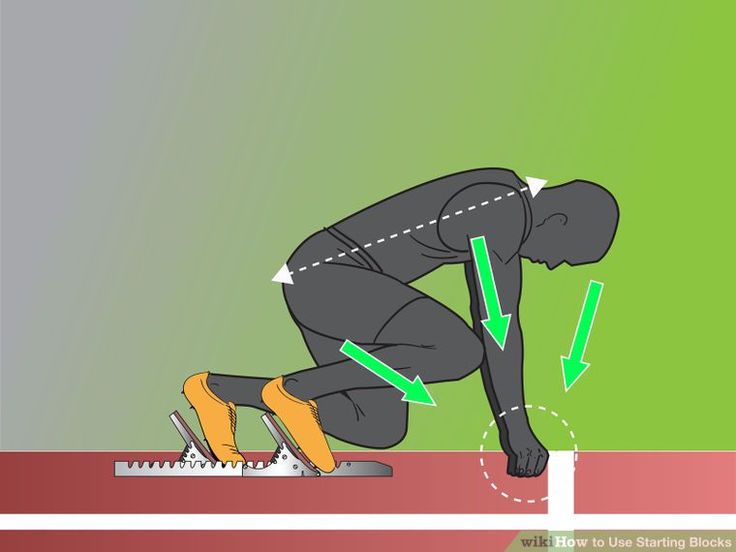
Check out my guide on proper running form to learn more about how to adopt good form during a run.
Share
576 shares
Find out what’s causing you to feel fatigued a mile into your run, then, learn helpful tips on how you can boost both your physical and mental stamina.
Last updated: April 27, 2022
6 min read
Many runners experience fatigue during a run. But what if that fatigue prevents them from completing the run without stopping, or at all? Feeling tired during a workout is a key sign that you need to improve your cardiovascular endurance. More than that, it’s an indicator you need to work on your mental stamina and how you’re preparing for your run.
It’s easy to assume that if you can’t run without getting tired, you’re unfit. But in reality, there are many more components that contribute to the feeling of fatigue that crops up during physical activity for a runner.
But in reality, there are many more components that contribute to the feeling of fatigue that crops up during physical activity for a runner.
As a runner, you want to run long distances without experiencing exhaustion, or needing to take walk breaks every five minutes. So it’s time to work on your cardio!
Cardiovascular fitness refers to how efficiently your cardiovascular system can transport oxygenated blood around your body to your working muscles. Cardiorespiratory endurance refers to how long you can sustain this during physical activity, before you get tired.
At a very basic level, a runner with good cardio can run for longer. It means their heart, lungs, muscles, and blood vessels are healthy and efficient.
The best way to improve your cardiorespiratory endurance is to run as regularly as you can. How many times a week should you run? You don’t want to run every day because recovery is vital. You need to give your cardio system the chance to adapt as part of your training plan.
You need to give your cardio system the chance to adapt as part of your training plan.
Endurance is a marker of how long you can sustain exercise. To improve your endurance, you’ve got to push yourself into some long runs. If you’re only sticking to short one-mile runs, your body isn’t placed under any new stress, and it won’t learn to adapt to a higher output.
Incorporate at least one long run per week. Test yourself with long distances — it’s okay to take walk breaks! The goal is to try and delay them as much as you can and to lengthen the running period each time, until you can run the distance non-stop.
Tip: A helpful way for runners to monitor their tiredness is to take a mental note of the rate of perceived exertion (RPE). The RPE scale is used to self-measure the intensity of your workout. If you have a high heart rate, are short of breath and unable to keep going, you can expect your RPE to be at a nine or 10 (out of 10). This is reflective of high-intensity exercise. When you reach this, try decreasing your speed or walking until your RPE comes back down to a five or six. This type of interval training is an effective way to increase endurance and run for longer during your workout, from start to finish.
When you reach this, try decreasing your speed or walking until your RPE comes back down to a five or six. This type of interval training is an effective way to increase endurance and run for longer during your workout, from start to finish.
Stamina is a term often used interchangeably with endurance. But there are a few key differences between the terms. Endurance specifically relates to physical fitness, whereas stamina also encompasses mental fitness. It’s not just how long your body can work for, it’s how long your mind can.
You may be feeling mentally tired soon into your run, but your body can handle it. For beginner runners, or people who struggle to enjoy running, it’s easy to let your mind take over and give up early in your run.
To move beyond a mental running block and push through it, follow these tips:
 Motivate Yourself with Music
Motivate Yourself with MusicIt's a good idea to make a motivating music playlist to listen to while running that includes all your favorite upbeat songs. If you start listening to slow-paced music, your own pace may reflect the beat. Instead, listen to music with a tempo of 120 to 140 beats per minute. This will keep you energized and motivated as you run mile after mile.
It’s easy to get tired when your focus is centered around how hard your run is. Distract yourself by setting a goal of reaching a landmark in the distance, or think about something else — the book you’re reading, your work day, your weekend plans? Redirect your focus from the distance and the miles to something fun and a better pace will follow.
Think of your motivation. Maybe you want to perform better in the gym, lose weight, or just feel more confident in life. Let this be your incentive to keep going the distance and keep your pace consistent.
Running is taxing on the body and mind. It’s not something you should go into if you’re dehydrated, sleep-deprived, hungry, or improperly prepared physically. But yet so many runners do, and then they wonder why they’re hit with exhaustion a mile into their run or their pace suffers.
Consuming a carbohydrate-rich meal prior to your run can help to counteract the glycogen depletion that happens when you run long distances. Glycogen is stored carbohydrates, the body’s main fuel source used during a run. If you start a run in a glycogen depleted state, your body won’t have enough energy to sustain activity as the miles go by.
Any experienced runner knows that the night before a big morning run, or for lunch before an evening run, it’s time to carb-load! Consume a high-carb meal such as rice, pasta, or potatoes and you'll be able to run longer.
A review published by the Journal of Sport and Health Science in 2015 found that dehydration can lead to significant reductions in physical performance. Before your run, make sure you are adequately hydrated. This will prevent you from getting a cramp and reduce hydration-related tiredness.
During and after your run, pay extra attention to replenishing electrolyte levels. As per a study published in Nutrition, “endurance athletes should drink beverages containing carbohydrate and electrolyte during and after training.” The researchers go on to mention that athletes rarely replace fluids lost in sweat, but it’s a must for optimal performance and speed.
When your heart rate increases, so does your breathing rate. But fast, shallow breaths cause the body to offload more carbon dioxide. This makes it harder to oxygenate our cells. As a result, your muscles cramp, you might get a side stitch, and you start to feel exhausted.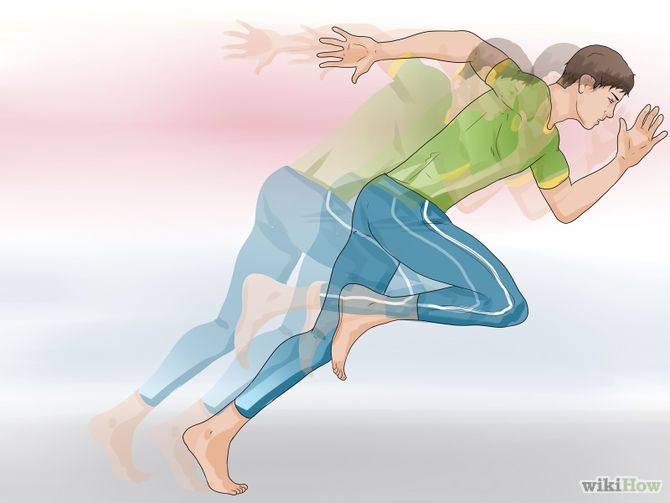 How you breathe can really affect your workout.
How you breathe can really affect your workout.
Instead, try nasal breathing. Take a deep breath through your nose for two counts, and exhale through your nose for two counts. This steadies your breathing rate to ensure an optimal intake of oxygen.
Avoid running without a warm-up first. Performing some dynamic stretches and low-intensity aerobic exercise for five to 15 minutes before a run can help to reduce injury risk by warming up your muscles. Factor each warm-up into your training plan to avoid running out of time or coming up with excuses. And then, look forward to faster runs, whether you're going just a few miles of prepping for a half marathon. Don't forget to cool down by walking.
For more expert-driven tips, be sure to download the Nike Run Club (NRC) app!
Download
5 Running Shoe Lacing Techniques for a Better Run
Nike’s Most Comfortable and Supportive Shoes for Heel Strike Runners
These Are the 6 Best Ways to Recover After You Run
Nike’s Best Lightweight Running Shoes for Speed and Performance
How to Breathe While Running
May 29, 2015 Sports and fitness
If running is starting to feel boring and you want to reach new records, these 25 hard, strong, and fast tips will help you add variety to your running workouts.
If you have outgrown the status of a novice runner, aimless runs may become boring for you. But that's no reason to stop running! Try to improve your run time. Take note of easy-to-described, but not at all easy-to-follow tips to improve speed, reaction time, correct concentration and body position while running. nine0003
Attention! Many of the listed methods are quite harsh, so without fanaticism. Be sure to listen to your own feelings. Remember that the main thing is the Hippocratic principle "do no harm"!
The key to running (at any speed) is the formation of the correct technique. This means that your upper body should remain straight but relaxed, your leg should drop to the ground with the middle of your foot moving from your hip, and your arms should move evenly back and forth (not side to side!), bent at a 9 angle.0 degrees.
Be short-legged with long strides: keep your stride rate constant, no matter how fast you run. The fastest and most efficient runners take about 180 strides per minute, keeping their feet close to the ground, only lightly touching it during landing. Aiming for the magic number 90, count how many times your right foot touches the ground in a minute.
The fastest and most efficient runners take about 180 strides per minute, keeping their feet close to the ground, only lightly touching it during landing. Aiming for the magic number 90, count how many times your right foot touches the ground in a minute.
Running time limited? Try interval training! Interval training - alternating periods of high and low intensity - is one of the effective ways to work on speed and endurance. Plus, interval training allows you to burn more calories in less time. nine0003
There's a reason real runners do short sprints before a big run. Strides (from English stride - "big step") - a series of comfortable sprints (usually from 8 to 12 runs of 50-200 meters each) - improve acceleration technique.
Feeling the need for speed? Satisfy her on the treadmill! Because the speed of the treadmill belt helps the movement of the legs. In fact, running on a treadmill is faster and easier. In addition, the speed increase button is at your fingertips. Tech tip: It's worth getting good results on the track first before you forgo the digital accelerometer and go outside. nine0003
In addition, the speed increase button is at your fingertips. Tech tip: It's worth getting good results on the track first before you forgo the digital accelerometer and go outside. nine0003
Experts are still debating whether static stretching actually prevents injury while running. But what is certain is that daily stretching exercises (targeting the hip flexors) increase the flexibility that is used when taking large steps.
Play with speed. The Swedish language even has a special word fartlek, meaning playing at speed. Fartlek - alternating movement in the rhythm of an easy jog, then at a sprint pace - will help increase speed and endurance. In the course of such a game, you will achieve great results, tiring less than during a regular interval training. nine0003 nejron/Depositphotos.com
Take advantage of boxers' experience by jumping rope. Boxers know that quick feet = quick hands. And for runners: foot speed = foot speed.
And for runners: foot speed = foot speed.
Even if running barefoot is not your choice, shoes are getting lighter and lighter to more mimic the natural movement of the foot and steps. Try the minimalist pair to get a feel for how less weight means more power for more speed. nine0003
Speed and smartness go hand in hand. Stronger core muscles (especially lower abs) allow runners to put more power and speed on the track. The best part is that for a faster finish, just 15 minutes of ab work a few days a week is enough.
Just do it a lot faster! Learning to breathe while running at higher speeds takes practice. Breathe through both your nose and mouth to get the maximum amount of oxygen to deliver to your muscles. Additionally, you should definitely try belly breathing, that is, filling the belly with air, and not the chest, during each breath. nine0003
Unhealthy food will give you high sugar levels, which will definitely negatively affect your speed. Get carbohydrates from whole grains, they will provide you with long-lasting energy without sudden drops in sugar levels.
Get carbohydrates from whole grains, they will provide you with long-lasting energy without sudden drops in sugar levels.
Who doesn't love new toys? Use additional gadgets and apps to add new experiences to your run.
It has been proven that running uphill (Rolling hills mode on the track) even once a week will help increase your speed, strengthen your core muscles and even increase your self-confidence. nine0003
Strong, lean muscles will only help you through the finish line. While runners don't have to be bodybuilding, one or two short strength sessions per week can greatly improve your running performance.
Ammentorp/Depositphotos.comOn the other hand, research shows that losing weight (fat, not muscle!) can help you improve your performance by an average of 3 seconds per kilometer for every pound you lose. Of course, not everyone has something to lose, so get your weight right before you go on a diet! nine0003
Proper hip rotation and maintaining a stable rhythm are important for running. For this reason, one of the recommended cross-training routines for runners is the stationary bike. And in the summer, perhaps, it is even better to ride down the street in the company of friends or a dog.
For this reason, one of the recommended cross-training routines for runners is the stationary bike. And in the summer, perhaps, it is even better to ride down the street in the company of friends or a dog.
Just looking down at your running shoes or turning your head while running to check how you are ahead of your rivals eats up precious time. Instead, focus on what's in front of you, 10 to 20 meters down the track, and keep your eyes on the finish line. nine0003
The whole body plays a role in creating speed: from the top of your head to the tips of your toes! Pay attention to your fingers and try to stretch them slightly (up towards the lower leg). In this case, a smaller part of the foot will touch the surface during the landing of the leg, and therefore the start of a new step will be faster.
Slow and steady can win the race, but fast and steady is guaranteed to win in speed too! The one who wants speed should choose a pace that can be called comfortably heavy. Maintain this pace for at least 20 minutes. nine0003 Wavebreakmedia/Depositphotos.com
Maintain this pace for at least 20 minutes. nine0003 Wavebreakmedia/Depositphotos.com
Can't go a day without coffee? Then good news for you! A cup of coffee before a race will give you extra speed. At the same time, this stimulant is absolutely legal.
The benefits of the plank have already been written more than once on Lifehacker. This exercise does not require special equipment and is available to every runner. Do the plank for 2-3 minutes for 6-8 sets 2-3 times a week and you will run faster. nine0003
Add yoga to your training plan. Flexibility improved with these postures will not only increase your speed, but will also help you recover faster after a long hard run.
Research shows that well-rested athletes have better reaction times and finish times. Think about it: the time gained at the finish line can be given back to your body with more sleep. nine0003
On the very day of the race, take off any excess clothing. Extra layers, belts, gadgets - take them off at this point. Less clothes and devices on your body - more speed.
Extra layers, belts, gadgets - take them off at this point. Less clothes and devices on your body - more speed.
Go!
').insertAfter("#intro"),$('
').insertBefore( ".youmightalsolike"),$('
').insertBefore("#quiz_container"),$('
').insertBefore("#newsletter_block_main"),ja(!0),c=document.getElementsByClassName( "scrolltomarker"),a=0;a
In this article:
How to calculate calories burned using a treadmill or other exercise machine
How to calculate calories burned using a smartphone app
How to determine how many calories to burn
Additional articles
If you are exercising to lose weight, or to maintain your weight at the same level, then it is best for you to learn how to count the number of calories you spend during exercise. Knowing how to balance the calories you burn with the calories you eat daily will help you achieve your goal. You can find websites on the Internet with special calorie calculators that will do all the work for you. nine0003
Knowing how to balance the calories you burn with the calories you eat daily will help you achieve your goal. You can find websites on the Internet with special calorie calculators that will do all the work for you. nine0003
1
Enter your weight. If necessary, use the weights available in all gyms.
2
Start exercising. The machine will track your calories burned based on your weight and training intensity.
3
Write down the number of calories burned in a diary or on your smartphone. nine0154
Advertising
1
Download calorie counting software from the iTunes Store or Google Play.
2
Enter your weight into the program.
3
Choose the exercise you want to do. Select an intensity level, such as low, medium, or high.
4
Enter the duration of the workout. nine0154 Or enter the distance you ran or walked during your workout.
nine0154 Or enter the distance you ran or walked during your workout.
5
Save the number of calories burned in your phone, or write it down in a separate notebook.
Advertising
1
Determine how many calories you need to consume daily to reach your goals.
2
You must do so much exercise and consume so many calories that you will lose 0.5 to 1 kg of weight per week.
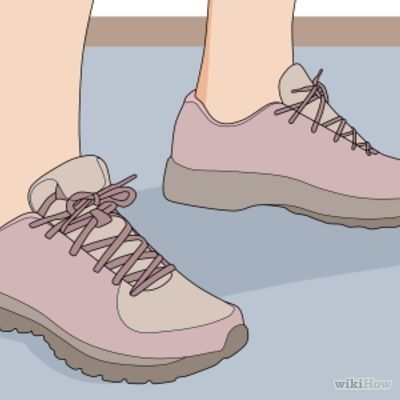 For example, if you burn 300 calories during a workout, then eat 300 calories of food accordingly. nine0156
For example, if you burn 300 calories during a workout, then eat 300 calories of food accordingly. nine0156 3
Record everything. Record everything you eat and all the exercises you do during your workouts so you can accurately track your calorie burn.
Advertising
Advertising
